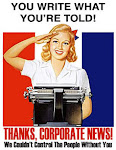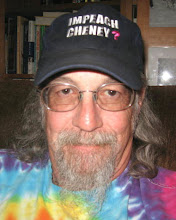Even many Republicans today recognize Franklin D. Roosevelt as the greatest president of the last century. The anti-Franklin Roosevelt, however, is George W. Bush.From his regressive tax codes and plan to privatize Social Security to his Supreme Court appointments, from his favoritism toward big business to his belief in preemptive war, Bush could hardly be more different in his political, economic and social philosophy from the architect of the New Deal.
The two presidents also differ in their leadership styles. Roosevelt believed in strong, collective leadership. His Cabinet was broad and inclusive. Relishing experimentation and the lively competition of ideas, he took talent where he could find it. His secretary of Agriculture, Henry Wallace, and his secretary of the Interior, Harold Ickes, were progressive Republicans, and Frances Perkins, his secretary of Labor, was an Independent. His secretary of War, Henry Stimson, and his secretary of the Navy, Frank Knox, were Republicans - he even chose Republican Harlan Fiske Stone as chief justice in 1941.
Recent presidencies have seen the Cabinet decline as a vehicle for collective leadership, but under Bush it has reached its nadir because the president prizes above all ideological uniformity. Cabinet meetings are reported to be brief and perfunctory with no deep discussions or exploration of alternative policies. Can you name more than two or three members of Bush’s Cabinet?
If Bush doesn’t draw upon the collective leadership of a talented, diverse Cabinet, with whom does he share the responsibilities of leadership?
The answer is a device that goes back to the days of Andrew Jackson - the “Kitchen Cabinet,” which enabled presidents to work closely with a small group of advisors drawn from their formal Cabinet and from outside it. It can be a most useful tool if it is diverse in point of view and relatively public.
But Bush’s Kitchen Cabinet is rather odd. It has only one member, Vice President Dick Cheney, backed up by hard-core conservative White House staffers, working in secrecy. With little question, Cheney is the most powerful vice president in our history. He controls a staff of true believers, issues his own ideological pronunciamentos and maintains his own alliances with key conservatives in Congress. White House watchers speculate that, behind the scenes, Cheney directs policy.
What are the implications of Cheney’s enormous vice presidential power - and especially for the selection of future vice presidential candidates?
Historically, the second spot on the presidential ticket has had a dual function. First, it has been used as a peace-offering to the candidate and faction that lost the presidential nomination.
And second, it has been a pragmatic way to give balance to the ticket. FDR chose John Nance Garner as his vice president both as a sop to influential Southern Democrats who supported Garner and as a nod to the political center. In 1940, as World War II approached, he ran with Henry Wallace as a way to win the support of interventionist Republicans. And when Wallace proved too liberal for party centrists, FDR replaced him on the ticket in 1944 with the more moderate Harry S. Truman, who went on to defend Roosevelt’s New Deal policies when he in turn ascended to the presidency. Other presidents - such as John F. Kennedy, who chose Lyndon B. Johnson to balance the ticket toward the South and the political center - have used similar strategies. Sometimes, however, this tradition can backfire. William McKinley’s assassination catapulted into the White House that charismatic ticket balancer Theodore Roosevelt, who distanced himself from McKinley’s policies and set the GOP on a new, radical course.
It is one thing to balance toward the party center, as FDR and JFK did. It is quite different for a staunch conservative like Bush to tilt the ticket toward an even more right-wing Republican. That creates acute imbalance, narrowing the party’s electoral appeal and weakening its capacity to win support in Congress.
The Bush-Cheney presidency - shaped and led by ideologues who have rejected the creative, collective leadership that might be supplied by a vibrant, diverse Cabinet - has immobilized itself in its own narrowness and extremism. The test of leadership is not simply calling oneself “the decider.” The test is whether leaders can mobilize followers who will sustain them in the tough decisions that lie ahead.
James MacGregor Burns and Susan Dunn teach at Williams College. Burns is author of “Leadership.” They are coauthors of “The Three Roosevelts: Patrician Leaders Who Transformed America” and “George Washington”
© 2007 The Los Angeles Times




























No comments:
Post a Comment